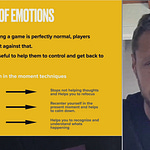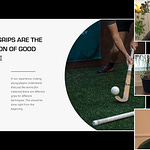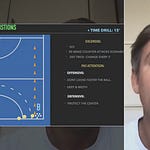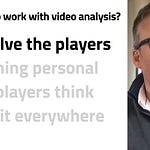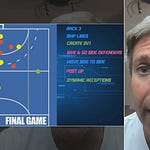If you missed our latest masterclass with John Goldberg, this is your quick rundown—and trust us, it’s one you’ll want to revisit.
This session? A deep dive into all things drag flick. We picked John’s brain for technique tweaks, training tips, and mental strategies—everything you’d expect from someone who’s lived corner-to-corner at the highest level.
Meet Your Master: John Goldberg
Let’s set the scene: “He is the definition of a club man (Beerschot THC in Belgium) but also multiple times the best striker in the Belgium Honor Divisionin his playing days… now Belgium’s Red Panthers’ penalty corner specialist.”
With slides, clips, and candid Q&A, John took us from biomechanics to mental grit, sharing both street-smart hacks and the kind of details you only get from hours in shooting circles (and even more hours nursing sore shoulders or backs).
Key Takeaways & Talking Points
1. Building Trust and Collaboration John doesn’t believe in “my way or the highway” coaching for drag flickers. Today’s top specialists spend endless hours alone on their craft. As a coach, your role is less about barking orders, more about fostering trust, asking the right questions, and knowing that sometimes, your best job is to guide—not dictate.
2. Protecting the Body: The Non-Negotiable Drag flick mechanics can be punishing. “Every doctor, every physio will tell you they’re not the biggest fans,” John quipped. The priority? Teaching flickers how to use their entire body—from flexible lunges to explosive hip rotation—to share the physical load. Injury prevention isn’t a ‘nice to have’; it’s the baseline.
3. Flexible Biomechanics Trump Cookie-Cutter Technique John cited Toon Siepman’s approach—there are core biomechanical principles worth fighting for (proper lunge, left hand low, right hand snap), but within those boundaries, individual quirks trump rigid dogma. “If it works, it is fine… in case it doesn’t work, that’s when you intervene.”
4. Key Technical Fundamentals
Open left hand for snap.
Left hand stays low at release for ball roll and deception.
Distance: About a foot from the ball with a slightly closed left foot, but individual comfort rules, as long as biomechanics are safe.
Rolling the ball on the stick: For deception, power, and, crucially, injury prevention.
Finish upright for balance—falling out of the flick is red-flag territory.
5. Flexibility vs. Power The world’s elite flickers are powerful, but flexibility can be a secret weapon. “There have been some Pakistani players who are not so powerful, but really, really flexible. That gives them enormous acceleration and wrist work.” For youth: flexibility first; power comes with age and physical development.
6. Personal Preferences in Stick Choice Low-bow sticks offer more whip and acceleration, but John’s seen straight-stick aficionados succeed with excellent roll and rotation. “Never force a player, but always let them test the options.”
7. Mental Toughness and Decision-Making Top flickers thrive under pressure. Having a Plan A and a ready Plan B is key, but conviction in execution is non-negotiable: “The biggest enemy of a drag flicker is hesitating or doubting.” Confidence and clear intent trump all.
8. Competitive vs. Technical Training Technique without pressure only goes so far. John advocated a training progression:
Start with technique,
Blend technique into competitive scenarios,
End with raw competition—replicating the stress and unpredictability of real matches.
9. Smart Use of Speed Guns and Volume Control Radar guns? Great for motivation, but not the whole story. Top speeds in international hockey hover around 130 km/h, but quality trumps quantity. “As soon as technique drops or fatigue leads to compensation, call it off.”
10. Coping With Bad Stops and Deceptive Runners Don’t let athletes abort on a poor inject or stop—adapt and use it, as the world’s best do. And as defenses improve (runners and keepers getting better all the time), training for going “around” or “through” runners, via minute technical and tactical adjustments, is now essential.
Final Thoughts & On-Demand Access
This session was a goldmine: biomechanics, mentality, and method. The major theme? Build adaptable, resilient specialists who protect their bodies, own their process, and clutch up under pressure. If you geek out on corner routines and crave intelligent insights—not just “hit it harder”—this is unmissable content.
Missed the live class? No worries. Catch the full masterclass video on demand—packed with step-by-step clips, pro tips, and all the Q&A your hockey brain can handle.







